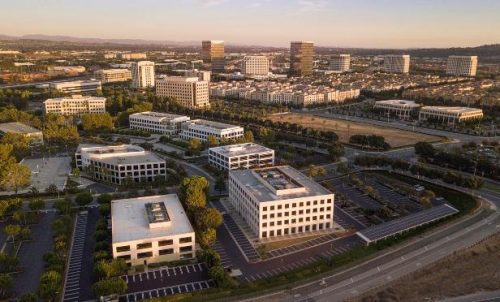KIMC Acquires 195-unit Affordable Multifamily Property in Las Vegas, Nevada
The property is located close to The Strip and downtown Las Vegas Yield PRO November 18, 2021 Kairos Investment...

January 12, 2021
During the pandemic, people have fled major metros in favor of small cities and suburban markets. While it is too early to tell, many real estate experts are predicting a rough road ahead for bog cities, which could see not only decreased demand from residents but also loss of company and corporate presence.
In the last 12 months, both individuals and companies have left major metros in favor of emerging sunbelt cities, like Phoenix, Austin and Houston. The movement could signal a permanent lifestyle shift. “The consequential issue is urban areas and what will turn them around,” Jonathan Needell, president and chief investment officer of KIMC, tells GlobeSt.com. “For a long time, the appeal has been quality of life: being able to walk to goods and services and not have a car. That helped major cities like San Francisco, New York and even Philadelphia.”
It isn’t unusual for major metros to bear the brunt of an economic downturn or for city goers to look for alternative and more affordable markets. However, the pandemic has been different because businesses have also followed suit. New York is a primary example. During the pandemic, the average growth rate declined as people moved out of the market.
Needell says that it will take decades and strong leadership to get cities back to where they had been. “What ebbed the flow in previous downturns was tax incentives for employers in the late 1980s and early 90s and ultimately making the city safe again. That took some leadership,” says Needell. Some of these CBDs have a long way before seeing growth again. They first need to see security come back.
 Back to All
Back to All
The property is located close to The Strip and downtown Las Vegas Yield PRO November 18, 2021 Kairos Investment...
Bisnow February 18, 2024 Irvine-based Kairos Investment Management Co. hired Jesse McDonald as senior investment director of real estate credit...
Multifamily Executive November 7, 2022 Keeping your renters engaged is critical not only for resident satisfaction, but also for...
National Apartment Association September 14, 2022 Everybody wants more affordable housing—these companies make it work. The need for more...
MultifamilyBiz March 17, 2022 Kairos Investment Management Company (KIMC), a firm that focuses on value-based real estate investments with...
Real Estate Capital USA September 13, 2023 Check out the latest insights from Real Estate Capital USA’s Real Estate...
Done Deals January 24, 2022 Kairos Investment Management Company (KIMC), a firm that focuses on value-based real estate investments...
Commercial Property Executive January 20, 2023 It’s fitting that Kairos Investment Management gets its name from the Greek word for “opportunity.”...
18101 Von Karman, Suite 1100
Irvine, CA 92612
(949) 709-8888
(949) 800-8500
investorreporting@kimc.com
Copyright © 2024 Kairos Investment Management Company | Disclosures
Kairos Investment Management Company is an Equal Opportunity Employer and, as such, does not discriminate in employment on the basis of an applicant or employee’s race, ethnicity, ancestry, national origin, color, sex, pregnancy (or related medical conditions), childbirth, family status, gender, gender identity or gender expression, age, religion, marital status, sexual orientation, disability, medical condition, military or veteran status, reproductive health decision making, or any other protected classification or characteristic under applicable federal, state or local law. Kairos will not discriminate against an applicant or employee who has one or more protected classifications, is perceived or regarded as having one or more protected classifications, or is associated with someone who has one or more protected classifications.
Kairos Investment Management Company will also provide reasonable accommodations to applicants and employees who may need such accommodations in connection with employment with Kairos on the basis of their disability, religion, status as a victim of domestic violence or pregnancy. An applicant who needs an accommodation in order to pursue employment with Kairos should contact Human Resources at HR@KIMC.com to request such accommodations. Kairos will engage in a good faith interactive process with the applicant to explore accommodations that will be effective, reasonable and not create an undue hardship.
You can see how this popup was set up in our step-by-step guide: https://wppopupmaker.com/guides/auto-opening-announcement-popups/
You can see how this popup was set up in our step-by-step guide: https://wppopupmaker.com/guides/auto-opening-announcement-popups/